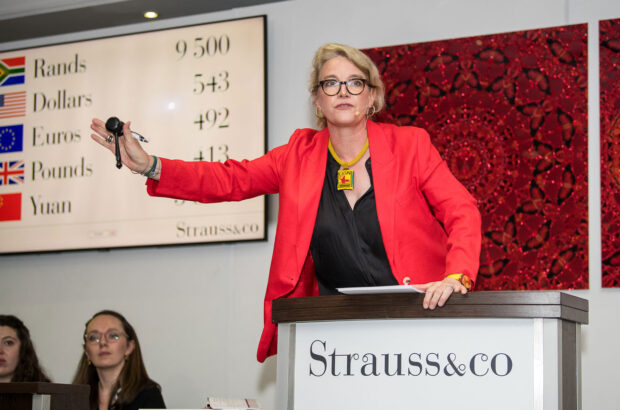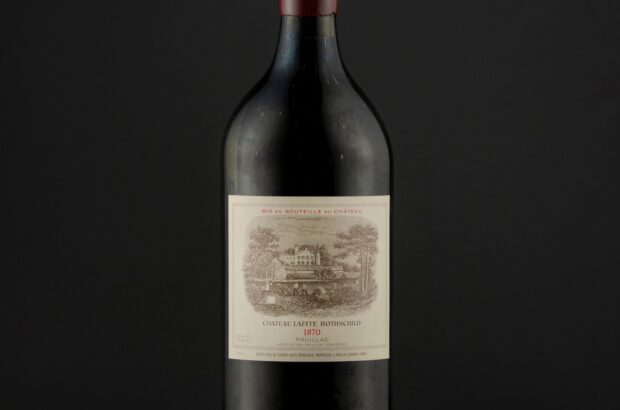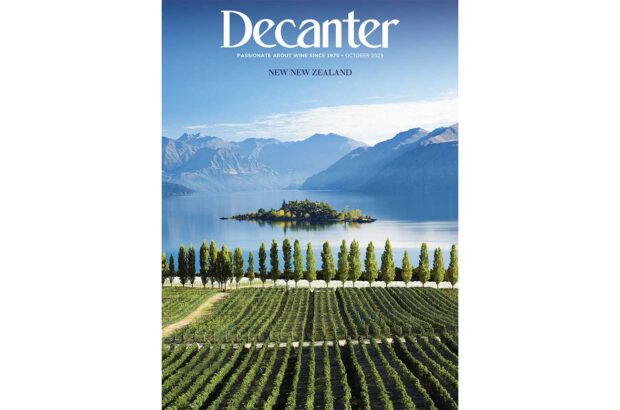If the mark of success is instant recognition, then the Sydonios wine glass is doing a pretty good job.
I started noticing them during the odd tasting at the end of 2018, and by last year’s en primeur campaign they were hard to miss.
It’s the weight that makes theses glasses stand out – or rather the lack of it – and it didn’t take long before I knew I was going to find the discreet ‘Sy’ logo on the foot of a glass just by picking it up.
So I was pretty happy to be stuck for a ride back to Bordeaux from Château Belgrave after finishing up a 2018 vintage tasting last April, because the estate suggested I grab a lift with Antoine Schvartz. It turned out that he was the man behind Sydonios.
It also turned out that the company is very much a Bordeaux success story. While Schvartz was born in the Champagne city of Reims, he spent four years working as a courtier for brokerage firm Les Grands Crus (LGC), during which he developed the idea of breaking the monopoly of Riedel and Zalto in the Bordeaux region.
‘When you’re a wine broker, you’re tasting dozens of wines every single day, both with your colleagues, with merchants and with châteaux owners,’ he told me as we drove down the D1 towards the city centre. ‘It became obvious that there was an untapped demand for a different kind of glass.’
How Schvartz got here is an illuminating story in itself of how Bordeaux works.
His background involved studying finance and economics at Lancaster university in the UK, a place that he remembers most fondly for its access to cycling weekends in the Lake District. After that, he studied European Affairs at Sciences Po in Paris.
His second year there, in 2011, was spent between classes and work experience at Société Générale, but decided against pursuing a career in banking after meeting a Bordeaux château owner at a wine event held by the Sciences Po tasting club.
This was Edouard Labruyère, of Pomerol’s Château Rouget, who is himself a graduate of Sciences Po and now one of the many estate owners who hold tastings at prestigious universities around the world, introducing their bottles to the next generation of ‘the right kind’ of wine drinkers.
It was Labruyère who suggested that there were plenty of interesting career opportunities in Bordeaux for France’s top graduates.
This is certainly true, as a quick graze of châteaux directors will take you through a roster of alumni from Sciences Po and other institutions, including:
- HEC – pretty much the whole management team of Latour;
- Ecole Centrale – Ariane Khaida, formerly of Duclot and now with Baron Philippe de Rothschild SA;
- European Business School and Harvard – Jean-Guillaume Prats at Lafite;
- And Ecole Normale Supérieure – albeit many graduates from ENS still end up mainly running the country.
Schvartz said, ‘I ended up working with Valentin Lillet at LGC, where their strategy was to hire the best educated people and then to teach them about wine. And the first thing I learnt was the business of Bordeaux; not to focus on turnover but to focus on the level of service to clients and building long-term relationships.’
Schvartz stayed at LGC for four years, but his wife, who he knew from Reims, found it hard to successfully pursue her own work with a big pharmaceutical company out of Bordeaux. ‘It can be tough to live here if you are not in wine,’ he said, bluntly.
Together they moved to Caen, where she had a job offer, and Schvartz worked out a way to stay in wine while living in a region better known for seafood and cider.
‘The idea of creating a glass, that really felt like there was no intermediary between the wine and the taster, just kept coming back to me,’ he said.
Together with Baptiste Larbre, a friend from Sciences Po, he spent a year reading through every research paper he could get his hands on, and sat down with wine owners to understand what it was they wanted.
The Bordeaux university of wine and vine science, the ISVV, got involved through Professor Axel Marchal and in the end seven prototype glasses were tested with more than 100 wine professionals.
The data showed only two glasses made the most difference to the final taste, so that’s what they made – one glass for whites, most reds and sweet wines, and another for more heavily tannic reds.
This detail alone impressed me, because it always seems obvious to me that simplicity is key. One sensible shape covers pretty much every eventuality.
Sydonios ended being up two wine glasses and two decanters – one for each glass – and they were ready for market in March 2018, partly funded through a crowd-sourcing campaign with Ulule.
‘My contacts in Bordeaux got me meetings, but not sales… I definitely thought it would be easier than it was,’ said Schvartz.
In the end, their first clients included Le Petit Sommelier wine bar in Paris, which holds tastings once-a-month, and it was through trying the glasses there that producers began to take them seriously.
To convince retailers to take a risk, they sold all glasses in entirely foam packing to ensure no breakages. ‘Less margin, but more sales,’ Schvartz said.
Today, 40 of the 61 Cru Classé estates in Bordeaux’s 1855 Classification are clients. The company does not reveal names of clients, but I’ve used Sydonios glasses at Calon Ségur, Lafon Rochet and Cos d’Estournel. More than 100 winemakers across Champagne have also signed up.
Two years on, Schvartz is now living in Brussels, where his wife has a high-profile job in pharmaceuticals, and where he also spent time as a student working for the European Parliament – including a four-month stint working under Nigel Farage, he added with a wry smile.
‘I love it here, because it’s full of 30 to 40-year-olds speaking dozens of languages, but all talking about politics. So in many ways not so different from Bordeaux, where there is also only one topic around any dining table.’







